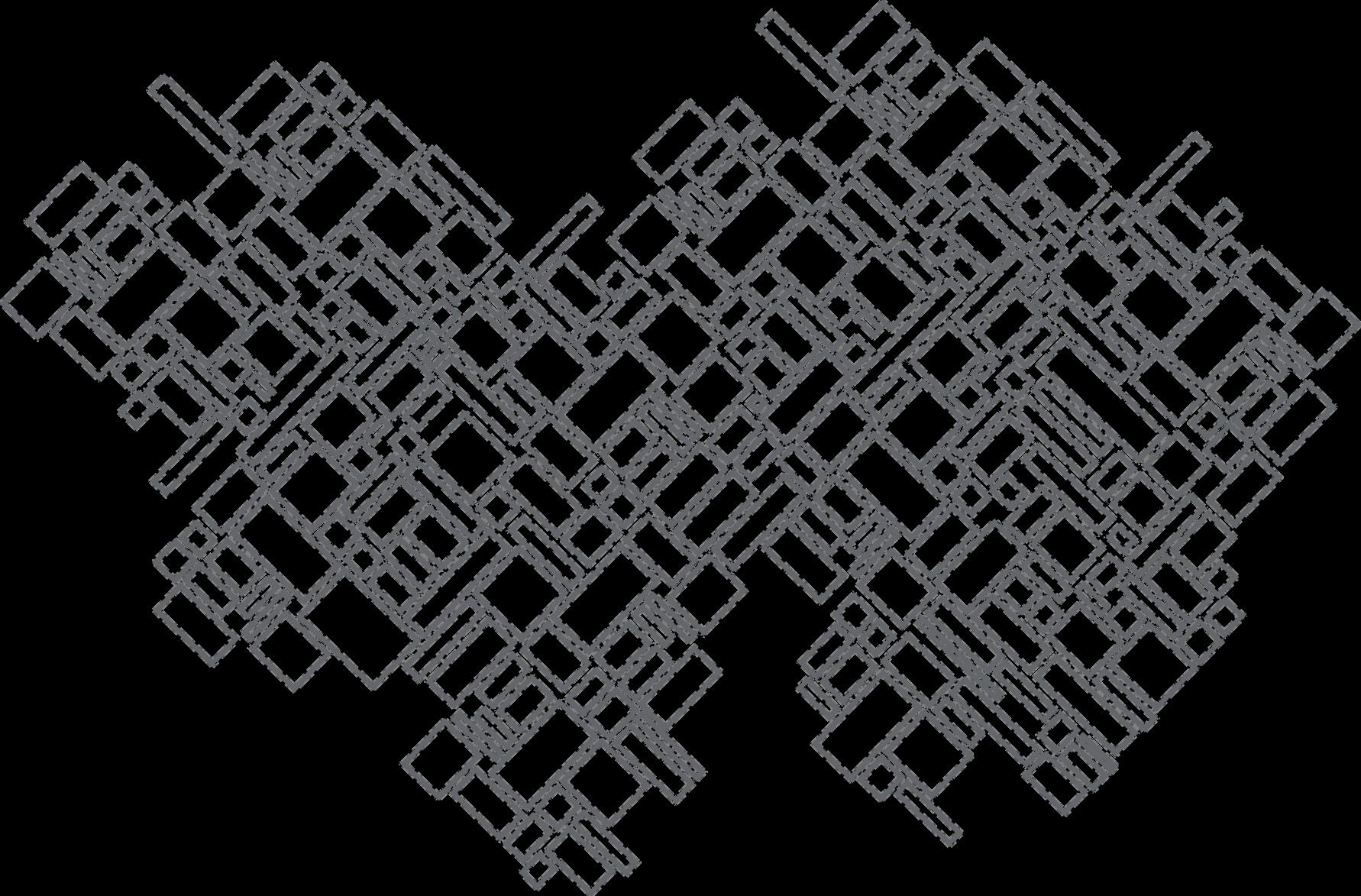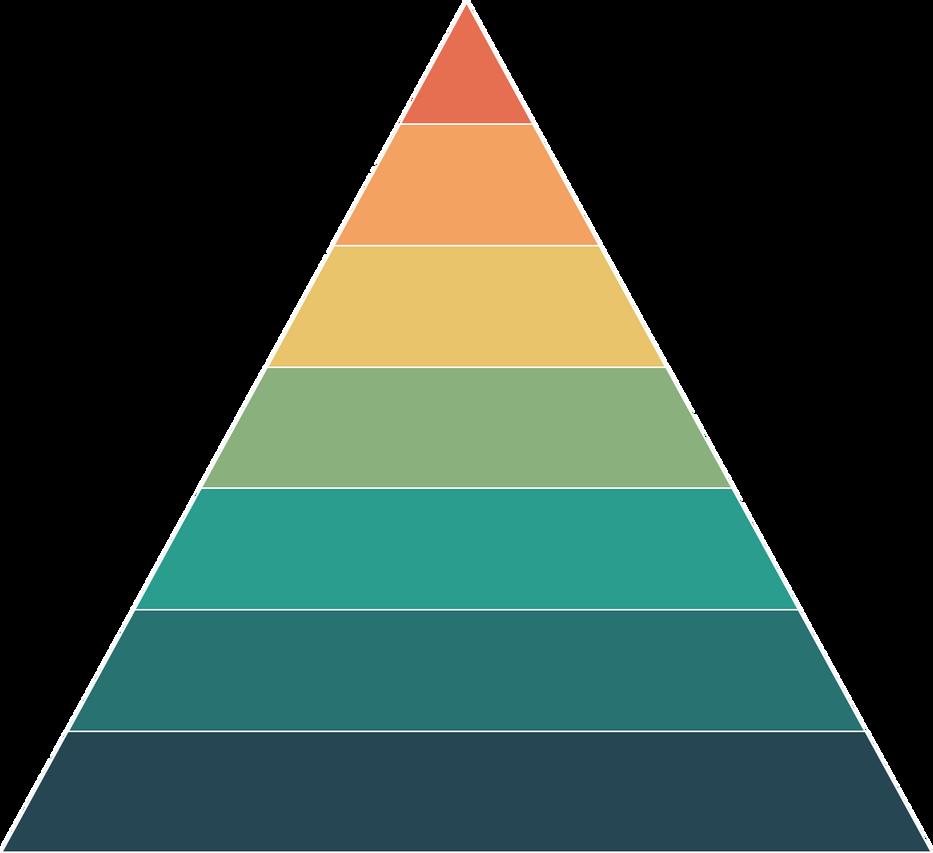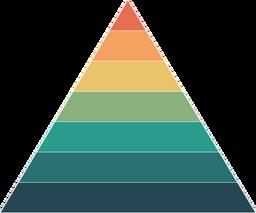W E S T A L L I S

H E A L T H D E P A R T M E N T 2 0 2 32 0 2 7 S T R A T E G I C P L A N

Acknowledgements
This document has been developed with significant input from all West Allis Health Department staff and the West Allis Board of Health. Thank you to all for your valuable participation in the strategic plan development process.
Published: August 2023



Executive Summary 01. Legal Mandates 07-08. Vision and Mission 02. Strengths, Weaknesses, Opportuniti 09. What We Do 03. Areas of Focus 10-14. Why We Do It 04. C
E N T S References 15. Plan Linkage & Alignment 05-06.
O N T
Strategic planning is a process for defining and determining an organization’s roles, priorities, and direction over three to five years. A strategic plan sets forth what an organization plans to achieve, how it will achieve it, and how it will know if it has achieved it. The strategic plan provides a guide for making decisions on allocating resources and on taking action to pursue programming priorities.
Planning for the West Allis Health Department (WAHD) 2023-2027 Strategic Plan began in 2022, coinciding with the completion of the City of West Allis Strategic Plan. This Health Department Strategic Plan is structured to align with the five focus areas identified in the City of West Allis 2022-2026 Strategic Plan.
Strategic Planning Timeline
October 2022: Vision, Mission, Values Review
November 2022: Strengths, Weaknesses, Opportunities, Threats (SWOT) Survey open to staff.
December 2022: Discussed Vision, Mission, Values with Board of Health and solicited input on SWOT.
January 2023: Strategic Plan Areas of Focus established
February 2023: Department rollout of Vision, Mission, and Values
March-May 2023: Establishing goals, objectives, and strategies
May 2023: Strategic Plan presented to Board of Health
August 2023: Approved by Board of Health
Public Health Accreditation
The WAHD was one of the first health departments in the nation to receive public health accreditation. Accreditation standards and measures have provided a framework for the health department to better identify strengths and weaknesses, helped the WAHD document our capacity to deliver the 10 Essential Public Health Services, expanded quality and performance improvement initiatives, stimulated greater accountability and transparency, and improved our workforce competencies.

1
SUMMARY
EXECUTIVE
Community Visibility Organizational Excellence Finance
FOCUS AREAS: 1. 2. 3. 4 Community Destination Finance Infrastructure Organizational Excellence
1. 2 3. 4. 5.
WEST ALLIS HEALTH DEPARTMENT
CITY OF WEST ALLIS FOCUS AREAS:
WHY WE DO IT
Purpose
This Strategic Plan serves as a tool to help the WAHD promote healthier communities in West Allis and West Milwaukee. This document is supported by the City’s Strategic Plan, the WAHD’s policies, procedures and work plans, the Community Health Improvement Plan (CHIP) and Public Health Accreditation Board’s Standards and Measures Version 2.0 for public health accreditation.
For West Allis Health Department staff, this plan is meant to…
Provide a roadmap for the WAHD staff over the next five years to achieve the Department’s long and short term goals.
Build on our common understanding of the Department’s mission and vision for leadership, staff, and the Board of Health in order to carry out our mission and achieve our vision.
Share our priorities, goals, objectives, indicators and activities with staff, to other city departments, elected officials, residents, and community partners.
Provide structure and direction so we can systematically assess our environment, capabilities, and available resources.
Provide guidance for the development of operational plans and performance measures for the health department.
Expand our abilities to use quality improvement to assess efficiency and effectiveness as one component of an overall performance management system.
Ensure the most effective use of organizational resources by focusing on key priorities. Inform policy, operational, and budget decisions.
Provide a structure to ensure oversight and management of programs and services.
For the public, this plan is meant to…
Communicate the health department’s vision and our intended direction over the next five years. Share our values and priorities.
Serve as a tool to measure progress and provide accountability to policy makers, stakeholders, and residents.
For our community partners, this plan is meant to…
Reflect our commitment to helping achieve community goals.
Provide community leadership to protect and promote the health of all people in West Allis.
7 4 2

3
WHAT WE DO
Foundational Public Health Services of the West Allis Health Department
The Foundational Public Health Services (FPHS) framework was developed to outline a basic set of public health programs and capabilities that every health department should provide. Foundational public health services include:

Assessment (Surveillance, Epidemiology, and Laboratory Capacity)
All Hazards Preparedness/Response
Policy Development/Support
Communications
Community Partnership Development
Organizational Competencies including leadership, health equity, performance management, quality improvement, information technology, human resources, and financial management
Assessment
The 10 Essential Public Health Services describe the public health activities that all communities should undertake:
Assess and monitor population health.
Investigate, diagnose, and address health hazards and root causes.
Communicate effectively to inform and educate.
Strengthen, support and mobilize communities and partnerships.
Create, champion and implement policies, plans and laws.
Utilize legal and regulatory actions.
Enable equitable access.

Build a diverse and skilled workforce.
Improve and innovate through evaluation, research and quality improvement.
Build and maintain a strong organizational infrastructure for public health.
1. 2. 3. 4 5 6. 7. 8. 9. 10
P ol i c y tnempoleveD Aaruss n c e 7 4
The West Allis Health Department recognizes that successful health departments operate with a systemsbased approach. The Strategic Plan and all of the large foundational plans are not intended to be standalone documents, but rather contribute to the larger organizational system of a highly effective and efficient health department. The strategic plan aligns with important assessment, planning, and evaluation work such as the community health assessment, community health improvement plan, state-wide health improvement plan, quality improvement plan, workforce development plan, and other operational plans. The figure below demonstrates the interrelatedness of the WAHD's plans and systems.
Vision & Mission
Strategic Plan
Goals, Objectives, Action Steps
Community Health Assessment & Community Health Improvement Plan
Performance Management System
Performance Measures
Quality Improvement
PHAB Accreditation

Workforce Development
Professional development, individualized training plans, core competency assessments
Programs, Projects, and Initiatives to Serve the Community
4
& ALIGNMENT 5
PLAN LINKAGE
Diversity, Equity, Inclusion, & Belonging Emphasis Adapted from Oneida County Health Department
PLAN LINKAGE & ALIGNMENT
The vision and mission of the WAHD are the driving force behind all activities and establish the foundation of the strategic plan. The strategic plan is the internal guide for the WAHD’s work with the community and it prioritizes health department plans, especially the Community Health Assessment and Community Health Improvement Plan process while highlighting the need for partnerships and community engagement in order to collectively impact health outcomes. The strategic plan's priority areas reinforce the agency's focus on performance management and continuous quality improvement.
Performance management ensures greater transparency and accountability in programs and practices, enhanced resource allocation, increase in public's trust, and more efficient and effective problem solving. Performance measures support progress, innovative practices, and continuous quality improvement.
WAHD's performance measures influence quality improvement projects by identifying improvement opportunities in programs, policies, and interventions. Quality improvement project outcomes may also influence new performance measures in order to assure sustainability of improvements. PHAB Accreditation is found in the middle of the pyramid because it influences WAHD infrastructure both up the pyramid and down
Workforce development assures a competent, skilled, dynamic, and professional public health workforce that systematically pursues opportunities to increase their skillsets in an effort to improve the quality of public health services and programs offered to the residents of West Allis and West Milwaukee
Finally, the base of the pyramid is the foundation of public health and what the community sees: the services provided by the WAHD. This part of the pyramid is a culmination of the other pyramid layers that ultimately improve health outcomes through programs, policies, and interventions
When creating the plans for each of these layers, a diversity, equity, inclusion, and belonging lens was used. Recognizing the significance of fostering an inclusive environment, the WAHD has diligently strived to ensure that every decision, policy, program, and service reflects a commitment to equity and equal opportunities. By embracing diverse perspectives, the WAHD seeks to strengthen its workforce, empower underrepresented communities, and cultivate a culture of acceptance and appreciation. As the journey towards greater equity and inclusion unfolds, the WAHD remains dedicated to making a positive and lasting impact in the lives of those it serves

4 6
Federal Laws: Federal laws generally set broad global standards and expectations that are thought to be for the good of all people. Federal laws that apply to WAHD include but are not limited to HIPAA, OSHA, CLIA, the Americans with Disabilities Act, and the Family Medical Leave Act. Laws such as these are generally the regulation of good and decent business practices. Yet from an organizational perspective, these laws can be challenging to read and understand and may require significant resources to implement and maintain.
State Laws: Guidance and standards for conditions and climates that affect Wisconsinites are set in State laws. In some instances the State mandates that WAHD, as an agent of the State, undertake certain activities such as disease reporting or monitoring restaurants for safe food practices. These activities may include requiring others to comply with State laws and rules, and overseeing that compliance. While WAHD generally does not have the ability to enforce State laws or rules even when acting as an agent of the State, local ordinances and regulations may be adopted that require entities under WAHD’s jurisdiction to comply with State laws or rules.
State laws can provide an opportunity to address societal ailments through activities such as disease surveillance and monitoring of environmental hazards, and they often provide useful administrative tools for local public health agencies. Significant challenges of State laws and rules are that they are often unfunded, they may provide little practical guidance, are sometimes subject to politics, and often give local agencies such as WAHD limited ability to effectively enforce them.
City Ordinances: The West Allis City Common Council creates ordinances that provide WAHD with certain duties and authority. Ordinances that mandate WAHD act in certain ways are generally broad, leaving WAHD to determine the means to achieve the mandates set out by the Ordinance. The regulations that WAHD promotes, implements, and enforces are the means by which the Department carries out those mandates. City ordinances allow WAHD increased autonomy in regulated public health matters; they are often cutting edge and can be tailored to support WAHD’s mission and goals. The challenge of local ordinances is that they are often outdated and sometimes written for the moment, not the future.
There are more than 100 provisions in the West Allis Revised Municipal Code (RMC) that vest some level of authority in the WAHD, the Health Commissioner, or the West Allis Board of Health (BOH). The West Allis RMC sets mandates and provides the authority to regulate and oversee the WAHD in the following areas:
Establishment of Board of Health
Role of the Commissioner: The power to correct by whatever means are necessary any health hazard that presents an immediate risk to the life or health of one or more citizens of the City of West Allis. Administer and enforce the Swimming Pool and Recreational Water Parks Codes
Administer and enforce the Food Code, including retail establishments and restaurants Tattoo, Body Art, Body Piercing Health Nuisances
WAHD shares code monitoring and enforcement activities with other City agencies, such as the Fire, Police, Building Inspection, Code Enforcement, and Public Works Department.
4 LEGAL MANDATES
Budget Considerations
Like most health departments in Wisconsin the WAHD budget is funded by a variety of state and federal grants, local tax levy, and program generated revenues and fees. Given the ever changing economic and political climate, predictable funding for Public Health on a year-to-year basis is a challenge. Providing basic public health services under these circumstances requires creative thinking about the capacity of the public health system to meet these needs. It will demand that we develop new strategies to use existing sources of flexible funding. As an accredited and well respected health department, the WAHD continues to seek out and secure funding to fulfill all of the functions and mandated services required of the health department including our strategic goals and objectives.
Contractual Obligations
Receiving federal third party reimbursement (i.e. Medicaid and Medicare) and grants/contracts requires that certain quality standards are met and administrative structures are in place.
Community Partnerships & Linkages to the West Allis and West Milwaukee Community Health Improvement Plan (CHIP)
While the WAHD is a strong public health entity, committed to delivering excellent agency specific services to our residents, we do not work in isolation. We recognize that often it is possible to effect greater change and move the community forward through collective impact. This entails community partners with a common agenda to join forces, forge shared goals to address complex health and social problems that directly impact our community. To that end, the WAHD takes its mission seriously to act in a leadership capacity, as the community Chief Health Strategist, to protect and promote the health of all people in West Allis. A prime example of this is the pivotal role the WAHD assumes in the process to develop and implement the West Allis and West Milwaukee CHIP every five years. The WAHD leads the charge to garner community engagement to develop the plan, maintain the commitment and enthusiasm, and direct the collaboration among community partners to successfully implement the plan.
To effectively move the CHIP from a blueprint into community action often requires community level teamwork. Community partners invested in a common purpose or issue can focus communal efforts to streamline and share manpower and resources, leverage available funding, and harness the collective strengths and talents of the team to dissect and tackle the many aspects of these complex problems facing our community.

8
SWOT (Strengths, Weaknesses, Opportunities, Threats) Results
The West Allis Health Department strategic planning process included an analysis of staff's perceived strengths, weaknesses, opportunities, and threats/challenges. The strategic plan’s goal is to use the strengths, seize new opportunities, and minimize weaknesses in order to achieve our department's vision statement.
Staff input was obtained utilizing a Survey Monkey survey. The results were analyzed and ranked by number of staff responses. Evaluation of data included review of ranked data, corresponding narrative, and comparison of 2022 results to those of the 2017 and 2014 SWOT Surveys.
Response themes in green were identified by staff in the 2022, 2017, and 2014 SWOT surveys
STRENGTHS
Competent/knowledgeable and Dedicated/motivated Staff
Range of services
Community vaccination clinics
Community partnerships/collaboration
Diversity/inclusion/welcoming/open mindedness (characteristics of staff)
WIC
Birth/Death Certificates
Funding
Social network/media/marketing
Language Line and translational services
WEAKNESSES
Communication between WAHD departments, teams, management and staff
Community outreach/collaboration
Limited funding/budget
Limited business hours/time slots
Lack of connection w/other city departments and services
Understaffing
Pushback from city leadership
Lack of awareness/understanding of services
Translational services
Access (transportation, general access)
OPPORTUNITIES
Increase collaboration and partnership
Educating community and leadership
Better address mental/behavioral health
Billing for more services
Health equity work
Continuous employee trainings and workforce development
Address substance use/harm reduction
Increase referrals (internal, external)
Expand programming (women breast care, family violence, hunger, LGBTQ+, maternal and child health)
Reshape policy
THREATS
Funding and economy
Politics and political environment
Community perception and mistrust
Support from city leadership
Local policy/ordinance changes
Community buy-in
Challenges with external and internal collaboration
Lack of community-wide understanding of equity
Staff turnover
Cultural change (positive and negative)
Translational barriers
7 4 9
DATA COLLECTON


FOCUS AREA 1 Community FOCUS AREA 2 Organizational Excellence FOCUS AREA 3 Visibility FOCUS AREA 4 Finance STRATEGIC GOALS 2023-2027 10
Equity and HiAPP

Equity and the Health in All Policies and Programs (HiAPP) approach serve as interconnected threads that weave through all goals and objectives in this strategic planning process. By prioritizing equity, we commit to addressing the root causes of health disparities and working towards fair and just outcomes for all individuals and communities. Incorporating HiAPP principles ensures that health considerations are integrated into decision-making across various sectors, promoting a holistic approach to health and wellbeing. HiAPP recognizes that health is created by many factors beyond healthcare and, in many cases, beyond the scope of traditional public health activities. Together, equity and HiAPP guide us in creating policies, programs, and services that are inclusive, responsive, and sustainable, ultimately advancing health equity and improving the overall health and well-being of our community.
Good health requires policies that actively support health
It requires different sectors working together,
This diamond denotes equity work in the goal, objective, or underlying strategies.
This star denotes HiAPP work in the goal, objective, or underlying strategies.
11
PARTNERSHIP AND COLLABORATION
Goal: Assure Health Department’s partnerships and collaborations are meeting the needs of the community as defined by the Community Health Improvement Process (CHIP)
Objectives:
By December 31, 2027 ensure achievement of 2023-2027 CHIP Goals and Strategies.
Conduct annual asset mapping to assess current partnerships and update partner/contact lists.
EXTERNAL COMMUNICATION
Goal: Ensure Health Department services are accessible and understandable for all.
Objectives:
WAHD Internal Marketing/Outreach Committee will update Communication plan biennially, informed by community survey on WAHD accessibility and familiarity of services.
By December 31, 2023 establish framework for ensuring equity and accessibility considerations in marketing and engagement plans/strategies.
HEALTHY NEIGHBORHOODS
Goal: Promote healthy neighborhoods and address community health challenges.
Objectives:
By December 31, 2027, increase programming to support health and human service needs of community through Health in All Policies and Programs (HiAPP) approach and collaborative delivery model. Through strategic planning cycle, work with city partners on Nuisance Abatement program.
COMMUNITY 12
TRANSPARENCY AND ACCOUNTABILITY
Goal: Assure the Health Department is accountable and transparent in its practice, services, and communication.
Objectives:
By December 31, 2023, utilize software (i.e.: Tableau, Clear Impact) to create at least one public facing dashboard. Routinely assess adherence to Health Department vision, mission, and core values.
ACCREDITATION
Goal: Sustain the core criteria of an accredited health department by completing the PHAB reaccreditation process.
Objectives:
Foster a culture of continuous quality improvement and performance management to improve programs and services
Utilize Foundational Public Health Services (FPHS) Framework and Public Health Core Competencies to inform quality improvement and program development.
INTERNAL COMMUNICATION
Goal: Improve communication methods to ensure employees in all divisions receive relevant information.
Objectives:
By December 31, 2023, implement an all-staff training on internal professional communication.
By December 31, 2023 develop and implement process for surveying effectiveness of communication processes.
By December 31, 2023 update Employee Engagement Committee charter and include in DEIB (Diversity, Equity, Inclusion, Belonging) policy.
By December 31, 2024 establish a WAHD internal communication “operating agreement”.
By December 31, 2025 include utilization of calendaring in Outlook and the Health Department Master Calendar in new staff training.
10 ORGANIZATIONAL
13
EXCELLENCE
VISIBILITY
EDUCATING COMMUNITY, LEADERSHIP AND CITY STAFF
Goal: Increase Health Department outreach opportunities and involvement in the community.
Objectives:
By December 31, 2025 Marketing Committee will establish procedure for planning and executing of Health Department events for upcoming calendar year.
By December 31, 2026 develop process for increasing support of innovative public health practices by city leadership.
FINANCE
NEW FUNDING OPPORTUNITIES
Goal: Seek grant opportunities and revenue sources that align with our vision and mission
Objectives:
Through December 31, 2027, seek out alternative and innovative financing solutions.
Through December 31, 2027, prioritize and be intentional about grant application opportunities.
Through December 31, 2027, explore expansion of billing for services
MAXIMIZING FUNDING STREAMS
Goal: Make use of existing structured spending procedures for grants to ensure that funding streams are utilized to the fullest potential
Objectives:
Through December 31, 2027, ensure ongoing collaboration with City Finance on summary sheets, grant development, and budget checks.
14
Public Health Accreditation Board Strategic Plan 2020-2022 https://phaboard.org/wpcontent/uploads/PHAB-Strategic-Plan_One-Pager-2020-2022.pdf
Framework for Essential Services and Foundational Capabilities in Public Health

https://www.cdc.gov/publichealthgateway/publichealthservices/essentialhealthservices .html
Public Health National Center for Innovations: Foundational public health services in action. PHNCI. https://phnci.org/national-framework/fphs
Health In All Policies- Centers for Disease Control and Prevention
https://www.cdc.gov/policy/hiap/index.html

15
REFERENCES
















